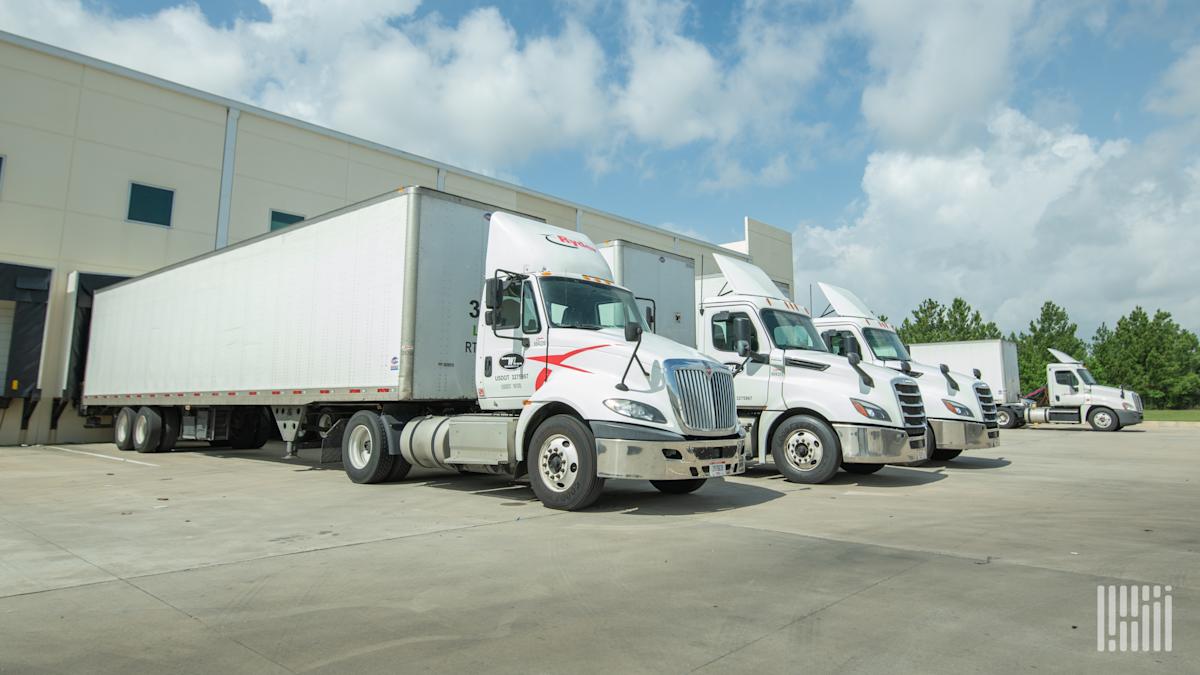When dispatch handoffs get sloppy, mistakes multiply and money slips through the cracks. Drivers get left in the dark, loads fall through the cracks, and your business starts to bleed in places you can’t afford. Whether you’re running two trucks or twenty, this article will show you how to build a clean, repeatable dispatch handoff system that keeps your team aligned, your drivers confident, and your operation tight from shift to shift. This isn’t about fancy tools—it’s about discipline, process, and ownership. Because if you’re growing your fleet, you can’t scale chaos. You need clarity.
If your dispatch handoffs are inconsistent—or worse, nonexistent—then your business is leaking money and losing trust somewhere, guaranteed. Don’t blame the driver. Don’t blame the broker. Don’t blame the freight. Blame the system—or the lack of one. It doesn’t matter if you’re new to delegation or trying to build a second shift for the first time. What matters is whether your people can pass the baton without fumbling. Because when they can’t, things break. And in trucking, every mistake has a cost—lost time, lost trust, or lost revenue.
This article is for the owner-operator turning into a small fleet. It’s for the dispatcher stretched thin trying to manage multiple shifts. It’s for the business owner finally stepping back from the day-to-day but tired of getting pulled in every time something slips. No matter your stage, one truth applies: handoffs aren’t optional. They’re not a luxury for big companies. They are the backbone of a professional operation. You want to scale? Then start here.
Dispatch isn’t just about booking freight and checking ETAs. It’s about managing critical information in real time, making decisions with incomplete data, and coordinating moving pieces across time zones, driver personalities, and shifting customer expectations. It’s fast, it’s stressful, and it leaves zero room for ambiguity. That’s why when information doesn’t transfer cleanly between dispatchers, shifts, or departments, everything downstream gets shaky.
Think about it like a relay race. The fastest runner in the world won’t win if they drop the baton. That’s dispatch. Your team could be made up of smart, hard-working people—but if they can’t pass critical information from one shift to the next without missing a step, you’ll always be reactive. You’ll always be fixing problems that were avoidable.
Handoffs are where good freight turns into bad experiences. They’re where a driver starts doubting your operation. They’re where a broker decides they can’t rely on you anymore. And most importantly, they’re where you, the owner, get dragged back into the weeds. Not because you want to—but because you have to. And that’s a sign of system failure.
Let’s get tactical and call out the real symptoms of bad dispatch transitions. These aren’t hypotheticals. These are the pain points that carriers bring up to me week after week:
1. Drivers Left in the Dark
There’s nothing worse for a driver than calling dispatch and realizing the person on the line has no clue what’s going on. “Who dispatched this load?” “Did anyone update the appointment time?” “Why wasn’t I told I needed a TWIC card for this pickup?” It’s exhausting—and it kills morale. When drivers don’t feel supported, they stop trusting dispatch. And once that trust breaks, retention gets shaky.
2. Double-Booked Trucks
One dispatcher thinks Truck 02 is free. Another hasn’t updated the system. Now you’ve got two loads scheduled for the same asset—and no good way to cover both. Canceling means disappointing a broker. Delivering late means upsetting a shipper. Either way, you lose ground. All of it is avoidable with proper coordination.
3. Missed Appointments and Avoidable Fees
Some deliveries are drop-and-hook. Others are strict appointments with late fees if you miss by 15 minutes. If one shift doesn’t flag that for the next, you’re going to pay—literally. Worse, the customer will label you unreliable. It doesn’t take many of those errors to damage your credibility.
4. Paperwork Gaps That Delay Pay
If nobody logs the rate con, scans the signed BOL, or updates delivery notes in your TMS or system of record, you’ve got a mess. Now accounting can’t invoice, you can’t prove delivery, and you’re left chasing paperwork two weeks later with nothing but confusion in the thread.
5. The Owner Gets Dragged Back Into Ops
Let’s call it what it is. When handoffs fail, it’s usually the owner who gets the late call. The angry broker. The missed check call. The confused driver. The lost document. The entire purpose of building a team is to offload that weight. But when your team isn’t aligned, you don’t gain leverage—you just multiply stress.
A smooth dispatch handoff doesn’t require a six-figure TMS or a massive back office. What it does require is clarity. Everyone needs to know what gets communicated, how it gets documented, and when it must be passed on. This isn’t about micromanaging—it’s about standards.
1. Create Solid SOPs
If you don’t have documented procedures, you’re playing the telephone game. SOPs (Standard Operating Procedures) turn tribal knowledge into institutional knowledge. Document how your team transitions shifts. Include what info gets captured, how it’s stored, and what must be communicated—every time, no exceptions.
2. Centralize Information in One Hub
Text threads, sticky notes, and verbal updates don’t scale. Use one centralized system—whether it’s a TMS, a shared spreadsheet, or a project management tool. The goal is simple: one source of truth that every dispatcher can rely on. Real-time updates, driver notes, broker expectations—all in one place.
3. Use an End-of-Shift Checklist
Before a dispatcher clocks out, they should complete a simple but critical checklist. Things like:
Think of it like a pilot’s pre-flight check. Boring? Maybe. But it prevents catastrophe.
4. Formalize the Handoff Communication
Don’t assume someone will figure it out. Require a formal signoff—voice note, Slack message, or brief huddle. The next person should start their shift with total visibility, not detective work.
5. Keep Drivers in the Loop
Your dispatch shifts might change—but from a driver’s view, it should feel seamless. If a driver needs to re-explain their situation every shift change, you don’t have a dispatch team—you have a liability. Drivers are your field team. They need to feel continuity. Build trust by making transitions invisible to them.
Maria handles dispatch during the day. James works nights. Simple enough. One night, James gets a call—the driver’s truck won’t start. There’s a 5am appointment on the books. But guess what? No one noted whether the appointment was strict or flexible. No backup plan was in place. The second truck’s location is outdated. James can’t act fast enough.
By morning, the load is missed, the broker’s calling furious, and the driver’s been sitting for hours without a solution. Maria’s frustrated. James feels set up to fail. And the owner is back in the hot seat, once again, cleaning up something that should’ve never happened.
All of it? 100% preventable—with the right handoff system.
Don’t wait until you “need” one. Build it before the cracks start to show. Here’s how:
1. Define Your Workflow in Writing
Map out your dispatch schedule and identify every handoff point—shift changes, role changes, or dispatch-to-driver communication chains. Write out the flow of data: where it starts, where it goes, and who owns each step.
2. Set Clear Non-Negotiables
Make handoffs mandatory. If you don’t complete the checklist and sign off to the next dispatcher, you don’t clock out. Make it part of your SOPs and performance expectations.
3. Train With Real Scenarios
Walk your team through what great (and poor) handoffs look like. Role-play scenarios. Don’t just train people once—review performance weekly. Call out breakdowns. If someone’s dropping the ball repeatedly, it’s not a system issue. It’s a discipline issue.
4. Choose Tools That Fit Your Operation
You don’t need to go buy a top-tier TMS tomorrow. Start with what fits. A well-structured Google Sheet, Trello board, or Slack channel can be enough if your process is clean. Tools don’t fix broken systems—but systems make tools more effective.
5. Make Drivers Part of the Process
Drivers are your best auditors. Empower them to speak up when something falls through the cracks. If they’re left in the dark during shift changes, make it easy for them to report it. That feedback loop is how you refine and improve.
In trucking, every load is a promise. Every mile is an opportunity—or a liability. And every handoff is a chance to either build momentum or introduce risk. Dispatch is the glue holding it all together, and when that glue starts to crack, your entire operation gets shaky.
A clean handoff process keeps your team aligned, your drivers supported, and your customers satisfied. More importantly, it keeps you—yes, you, the business owner—from getting pulled back into the chaos every time someone forgets to update a note or relay a message.
So don’t wait for another breakdown. Build your handoff system now. Document it. Train it. Enforce it. Because in this industry, operational discipline is what separates the amateurs from the professionals.
Let’s tighten it up and run it like a business.
Let’s get to work.
The post Dispatch Handoffs That Don’t Drop the Ball appeared first on FreightWaves.







